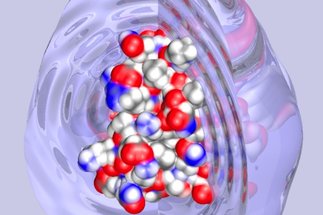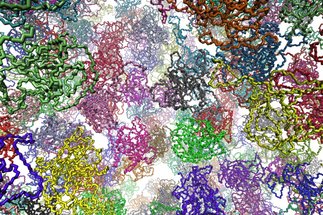Influence of the Solvating Environment on Protein Dynamics and Stability
Prof. Dr. Matthias Heyden
2013 - Sep. 2017
Matthias Heyden became Assistant Professor at Arizona State University in October 2017. Information on his current research is available here. This web page documents the activities of his group at the Max-Planck-Institut für Kohlenforschung (until 2017).
Proteins, the building blocks of life, and in particular enzymes, which catalyze the essential chemical and biochemical processes of life, have been optimized to their specific tasks by evolution. One of the specific adaptations is to work optimally in a specific environment, for example in aqueous solutions with high concentrations of other biopolymers and metabolites or as an integral part of a lipid bilayer.
As a part of the cluster of excellence RESOLV (EXC 1069), which focuses specifically on the effects of solvents on chemical and biochemical processes, we employ in our group molecular dynamics and Monte Carlo simulations to study the influence of the environment on solvated proteins by manipulating the solvent properties in a controlled way. In the current focus of our research are correlations of collective motion in proteins and their solvent, as well as the influence of high protein concentrations on protein folding.


